Articles
Croisade contre le Graal
Si le Graal est un symbole phare — aussi mystérieux que fascinant — de la mythologie et de l’inconscient collectif européens, Croisade contre le Graal appartient à la famille — peu nombreuse — des ouvrages mythiques, des livres cultes. Depuis sa parution (1933 en Allemagne, 1934 en France), il a guidé des générations de rêveurs vers les cimes ariégeoises, en général, et le château de Montségur, en particulier. Régulièrement réédité des deux côtés du Rhin, il est régulièrement épuisé et recherché. Adversaires et partisans des thèses développées par Otto Rahn, tous s’accordent sur un point: Croisade contre le Graal a largement contribué à l’engouement touristique pour les Pyrénées cathares.
Профессор Лэнгдон и последний Крестовый поход
Рано или поздно каждый сумасшедший вытаскивает из рукава тамплиера.
Умберто Эко. «Маятник Фуко»
Есть такая штука, именуемая ТВС, — теория всего на свете. Составляющие этой теории известны уже много веков: все связано со всем миллионами невидимых нитей, макрокосм тождествен микрокосму, все, что вы знаете, — это ложь плюс неистребимая идея о мировом заговоре. И, разумеется, всякая ТВС на поверку оказывается БСК — бредом сивой кобылы. Умберто Эко блестяще высмеял подобные теории в «Маятнике Фуко». Одних лишь рассуждений о связи размеров газетного киоска с тайнами нумерологии или о том, как устройство автомобиля отражает законы мироздания, достаточно, чтобы уже никогда не воспринимать всевозможные ТВС без презрительной усмешки.
What is the Grail?
The Grail. Between 1190 and 1240, it formed the central theme of a series of literary works that spoke of, and appealed to, a new social class, that of the knights and warriors and the adventures they encountered on their travels. In recent decades, it unleashed Indiana Jones on one of his death-defying treasure hunts and was the central ingredient of Dan Brown’s The Da Vinci Code, one of the biggest bestselling novels ever.
For Richard Barber, in The Holy Grail: The History of a legend, “it is, in all its forms, a construct of the creative imagination”. However, for dozens of other authors, the Grail is not a literary invention, but a veritable treasure, out there, somewhere. Unfortunately, in general, studies trying to identify and trace the physical Grail have taken on flights of fancy. The Grail has been linked with countries from the Middle East to America, as well as with the persecuted Cathars and even extra-terrestrial beings. It has been labelled a code word for the Ark of the Covenant, after the Templars allegedly transported it from the Middle East to a new hiding place in France.
The wooden book of Montségur
In the early 20th century, a series of palm leaves, containing anomalous writing, were apparently discovered within a hidden cache of the walls of the Cathar castle of Montségur. Though without any intrinsic value, the “wooden book” – as it became known – would become the centrepiece of the esoteric and metaphysical community; its discoverers even labelled it “the Oracle” and said it was able to contact the hidden masters of Agharta.
Montségur is seen as the final stronghold of the Cathar faith, a bastion of true devotion besieged by the worldly ambitions of the papal troops. In March 1244, the Cathars that had been locked inside the castle for months finally surrendered; approximately 220 were burned en masse in a bonfire at the foot of the pog when they refused to renounce their convictions.
Otto Rahn: A Hero's Journey
I recently visited the former South of France residence of the legendary Grail hunter Otto Rahn, only to discover that it was scheduled to be demolished, thus ending an era, and prompting this memorial.
I believe Otto Rahn (1904-1939) was a hero; the real Indiana Jones and prototype for Dan Brown’s Robert Langdon character. A tireless explorer, Rahn was a gifted researcher, committed to the quest like no one before, or since. Quite simply, he was a grail hunter extraordinaire.
Rahn was obsessed with the Cathars, and was convinced that their treasure remained hidden in the shadowy crevasses of the Pyrenees. His research led to Montségur, which he believed to be Munsalvaesche, the Mountain of Salvation of Wolfram von Eschenbach’s epic grail romance, Parzival. Not surprisingly, the entire region around Montségur soon became Rahn’s esoteric playground.
Austritt aus der SS von Otto Rahn
Datum: 25 (26?). Februar 1939 (weniger als drei Wochen vor seinem Tod)
Gruppenfuhrer!
Leider muss ich Sie bitten, bei dem Reichsfuhrer-SS meine sofortige Entlassung aus der Schutzstaffel zu befuerworten. Die Grunde, die mich zu diesem Entschluss und dieser Bitte treiben, sind so schwerwiegender Natur, dass ich Sie Ihnen nur mundlich darlegen kann. Zu diesem Zweck werde ich diesen Tagen nach Berlin kommen und mich bei Ihnen melden.
Heil Hitler!
Otto Rahn,
SS-obersturmfuhrer
----
Seine Handschrift ist schrecklich)
Заявление Отто Рана об увольнении из СС
Дата: 25? февраля, 1939 (менее, чем за три недели до смерти)
Gruppenfuhrer!
Leider muss ich Sie bitten, bei dem Reichsfuhrer-SS meine sofortige Entlassung aus der Schutzstaffel zu befuerworten. Die Grunde, die mich zu diesem Entschluss und dieser Bitte treiben, sind so schwerwiegender Natur, dass ich Sie Ihnen nur mundlich darlegen kann. Zu diesem Zweck werde ich diesen Tagen nach Berlin kommen und mich bei Ihnen melden.
Heil Hitler!
Otto Rahn,
SS-obersturmfuhrer
----
Его почерк просто ужасен))
Rahn's Resignation from the SS letter
Date: February 25?, 1939 (less than three weeks before his death)
Gruppenfuhrer!
Leider muss ich Sie bitten, bei dem Reichsfuhrer-SS meine sofortige Entlassung aus der Schutzstaffel zu befuerworten. Die Grunde, die mich zu diesem Entschluss und dieser Bitte treiben, sind so schwerwiegender Natur, dass ich Sie Ihnen nur mundlich darlegen kann. Zu diesem Zweck werde ich diesen Tagen nach Berlin kommen und mich bei Ihnen melden.
Heil Hitler!
Otto Rahn,
SS-obersturmfuhrer
Tom Crow Book 29 The Secret of the Templars Chapter 4 – Blood on the Clyde
pulp adventure based on the supposed local exploartions of Nazi archaeologist Otto Rahn
Tom travelled up from Hull, the nightmarish howling of those mysterious black dogs still echoing around his mind. What was Eros playing at this time? What had been the meaning of that bloody sigil scrawled onto the turret wall? Tom’s mind raced and clattered almost as if in time with the train. By the time the carriages pulled into Greenock he was no nearer the truth.
Tom was met on the platform by one of the agencies local operatives, Marianne, a member of the Free French. She in turn had directed him to the parish priest in Saint John’s Port Glasgow. After a friendly dram, the priest told him where to meet his next contact, the Bogle Stone; a huge rock perched at the top of the town, believed by locals to be haunted by an evil spirit.
The rain lashed down on Port Glasgow, as Tom approached the stone. A shadow moved from behind the rock.
“Tom Crow?” asked the shadow.
Rescanières: another unsolved death?
A memorial slab
Stand in the covered hallway that is in front of the church of Rennes-les-Bains, and you will find that the community indeed had respect – more so than for the other priests that served the community, it seemed – for Boudet. That in itself should be remarkable. However, there is also another name on the memorial slab: Rescanières.
The interesting thing is that Rescanières only served as priest of Rennes-les-Bains for one year: 1914 to 1915. It left him little time to leave an impression, it seems, but apparently he did. And the reason why and how he did so, has to do with his sudden, unexpected – and premature death: Rescanières was only 47 years old when he died. Might it therefore come as a surprise that some believe that he was murdered?

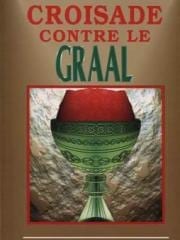
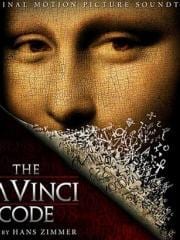
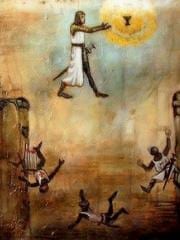
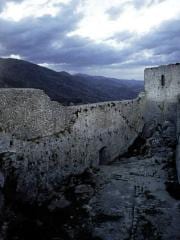
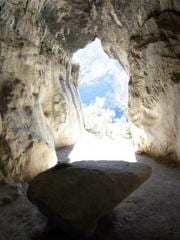
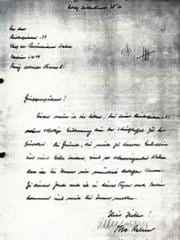
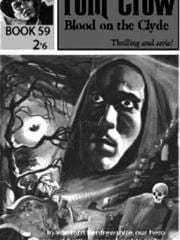
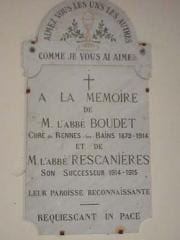
Commentaires récents
il y a 12 années 36 semaines
il y a 12 années 36 semaines
il y a 12 années 36 semaines
il y a 12 années 37 semaines
il y a 12 années 40 semaines
il y a 12 années 45 semaines